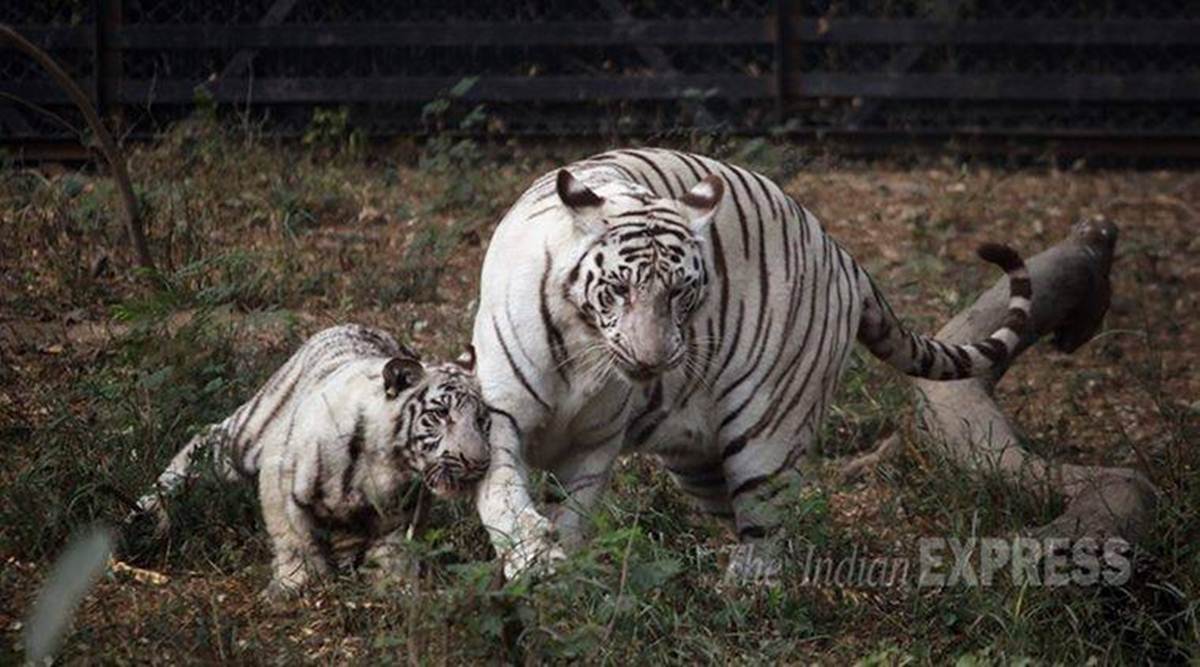Uttarakhand Tourism Minister Satpal Maharaj has written to Madhya Pradesh Chief Minister Shivraj Singh Chouhan, requesting him to send white tiger cubs from the Maharaja Martand Singh Judeo White Tiger Safari and Zoo in Rewa.
Uttarakhand is in talks with the Madhya Pradesh government to bring white tigers to Nainital’s Sitabani Wildlife Reserve for a forthcoming tiger safari project. Uttarakhand Tourism Minister Satpal Maharaj has written to Madhya Pradesh Chief Minister Shivraj Singh Chouhan, requesting him to send white tiger cubs from the Maharaja Martand Singh Judeo White Tiger Safari and Zoo in Rewa.
In the letter dated December 17, 2020, Maharaj says: “If a few white tiger cubs from Madhya Pradesh could be made available for Uttarakhand, it will give a new dimension to wildlife tourism at Sitabani and add to the state’s tourism revenue.”
Maharaj told The Indian Express: “I have directed the Tourism Department officials to chalk out a plan to promote tourism for the new tiger safari park. To make it more attractive and exciting for the tourists, we are trying to bring a white tiger from MP to the safari park.” The project is likely to be completed by November 2021 and will cost the state Rs 150 crore.
It was Rewa’s Maharaja Martand Singh who first caught a white tiger cub on May 27, 1951 from Sidhi district—the cub was named Mohan and brought back to Rewa. Today, most white tigers in captivity across the world trace their lineage back to Mohan. Rewa also has a White Tiger Sanctuary, complete with a safari. Interestingly, Mohena Singh—the granddaughter of Martand Singh—is married to Maharaj’s younger son, Suyesh Rawat.
Whether the effort yields any result remains to be seen since shifting tigers to a new habitat is a lengthy procedure and has to be done keeping in mind many parameters. It also involves the Central Zoo Authority, which is supposed to conduct a thorough analysis of whether the climate and environment in the new place would be favourable to the animal.
Source: Read Full Article


